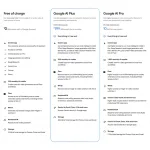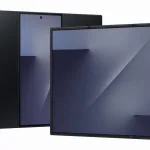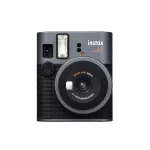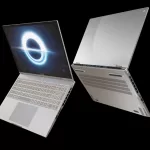
For the past week, I have been trying out Nimbuzz – a IM, VoIP client for mobile phones. The application is the creation of a Netherlands based company that also operates under the same brand name. The client works on many phones with its IM support ranging from Yahoo, MSN, Google, AIM, Skype, Jabber and few more. It also supports SIP calling, conference calling, chatroom facility and a unique Buzz feature. The Nimbuzz Buzz is a nice inclusion that notifies the friends and starts the Nimbuzz app when you’re trying to get in touch with them.
Though Nimbuzz is a good app, it needs to pay attention in some basic yet important areas. For instance, the use of tabs for quickly switching back to the user’s contact list or to the open chat and call windows. Selecting it every time from the menu list is cumbersome. Rectify this guys and I’ll definitely switch from a Fring loyalist to Nimbuzz.
Interested users can give it a spin by downloading it from here. Or if you have better alternatives than Nimbuzz, do let us know in the comments.





Impressive piece of information, let me elaborate more on VoIP. Voice over Internet Protocol has been around since many years. But due to lack of sufficient and affordable bandwidth it was not possible to carry carrier grade voice over Internet Protocol. But since the arrival of low cost internet bandwidth and new speech codecs such as G.729, G.723 which utilizes very low payload to carry carrier class voice it has recently been possible to leverage the true benefits of VoIP. G.723 codec utilizes only 6 Kbps (Kilo Bytes/sec) which is capable of maintaining a constant stream of data between peers and deliver carrier grade voice quality. Lets put this way if you have 8 Mbps internet connection, by using G.723 codec you can run upto 100 telephone lines with crystal clear and carrier grade voice quality. I am also a user of VoIP and have setup a small PBX at home. Since I have discovered VoIP I have never used traditional PSTN service.
Dear readers, if you have not yet tried VoIP I suggest that you try VoIP technology and I bet you will never want to use the traditional PSTN phone service ever again. VoIP has far more superior features to offer which traditional PSTN sadly cannot offer.
Also It has recently been possile to carry Video alongwith VoIP by using low payload video codecs. I cannot resist to tell you that by using T.38 passthrough and disabling VAD VoIP can carry FAX transmission, but beaware FAX T.38 passthrough will only work when using wide band protocols such as G.711, a-Law and u-Law.
By using ATA (Analog Telephone Adapter) which converts VoIP signals into traditional PSTN you can also using Dial-up modems to connect to various dialup services. I wont go in to the details what VoIP can offer, to cut my story short VoIP is a must to have product for every business and individual.
How VoIP Works
When we make a VoIP call, a communication channel is established between caller and called party over IP (Internet Protocol) which runs on top of computer data networks. A telephony conversation that takes place over VoIP are converted into binary data packets streams in real time and transmitted over data network, when these data packets arrive at the destination these are again converted into standard telephony conversation. This whole process of voice conversion into data, transmission and data conversion into back voice conversation takes place within less than few milliseconds. That is how a VoIP is call is transmitted over data networks. I hope that now you understand basics of how a VoIP call takes place.
What are speech codec’s and what role codec plays in VoIP?
Speech codec play a vital role in VoIP and codec determines the quality and cost of the call. Let me explain you what exactly VoIP codec’s are and how they work. You may have heard about data compression, or probably you have heard about air compressor which compresses a volume of air in enclosed container, VoIP codec’s are no different than a air compressor. Speech codec’s compresses voice into data packets and decompresses it upon arrival at destination. Some VoIP codec’s can compress huge amount of voice while maintaining QoS which means use this type of codec will cost less because it will consume just a fraction of data network. Some codec’s are just not capable of encoding huge amount of voice they simply consume huge amount of data networks bandwidth hence the cost goes up.
Following is a list of VoIP codec’s along with how much data network bandwidth they consume.
* AMR Codec
* BroadVoice Codec 16Kbps narrowband, and 32Kbps wideband
* GIPS Family – 13.3 Kbps and up
* GSM – 13 Kbps (full rate), 20ms frame size
* iLBC – 15Kbps,20ms frame size: 13.3 Kbps, 30ms frame size
* ITU G.711 – 64 Kbps, sample-based Also known as alaw/ulaw
* ITU G.722 – 48/56/64 Kbps ADPCM 7Khz audio bandwidth
* ITU G.722.1 – 24/32 Kbps 7Khz audio bandwidth (based on Polycom’s SIREN codec)
* ITU G.722.1C – 32 Kbps, a Polycom extension, 14Khz audio bandwidth
* ITU G.722.2 – 6.6Kbps to 23.85Kbps. Also known as AMR-WB. CELP 7Khz audio bandwidth
* ITU G.723.1 – 5.3/6.3 Kbps, 30ms frame size
* ITU G.726 – 16/24/32/40 Kbps
* ITU G.728 – 16 Kbps
* ITU G.729 – 8 Kbps, 10ms frame size
* Speex – 2.15 to 44.2 Kbps
* LPC10 – 2.5 Kbps
* DoD CELP – 4.8 Kbps
Switch to VoIP Today and you will never want to use traditional PSTN ever again.
Thanks
-Imran